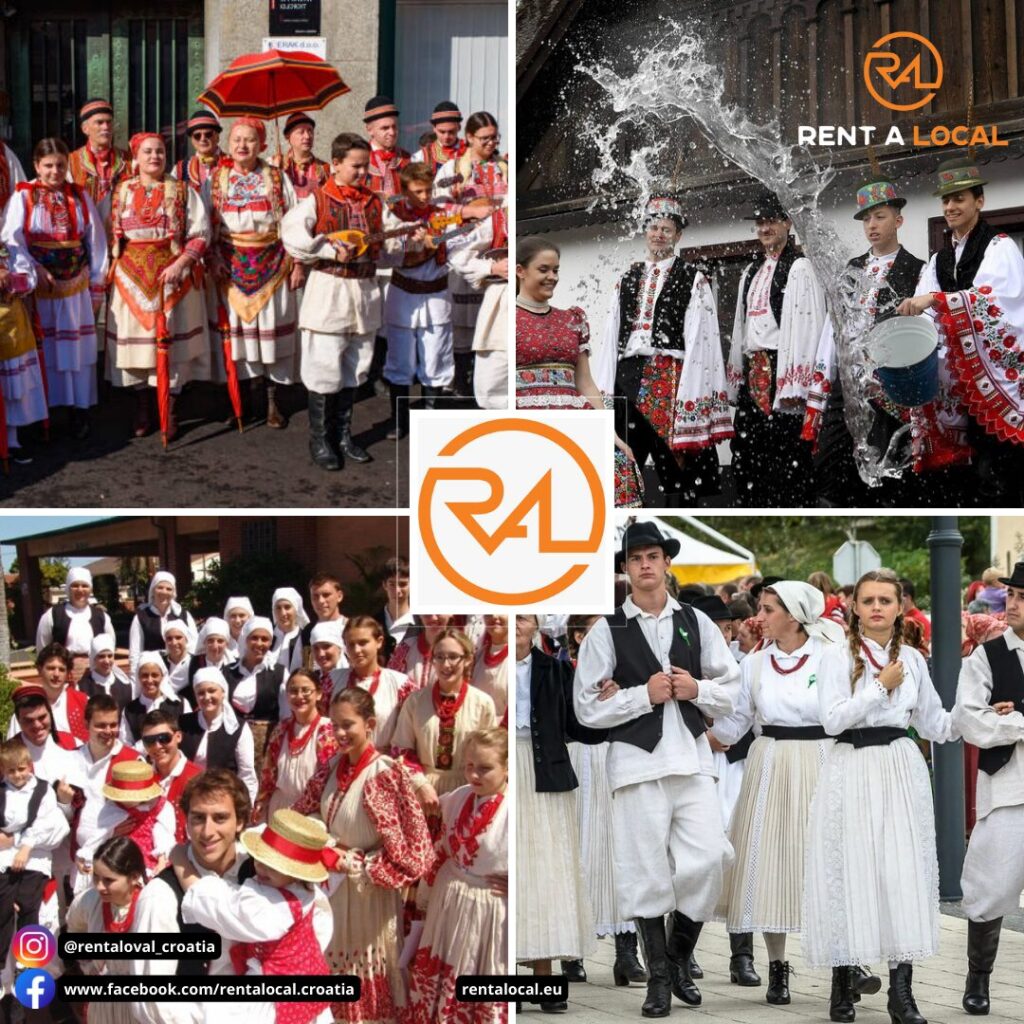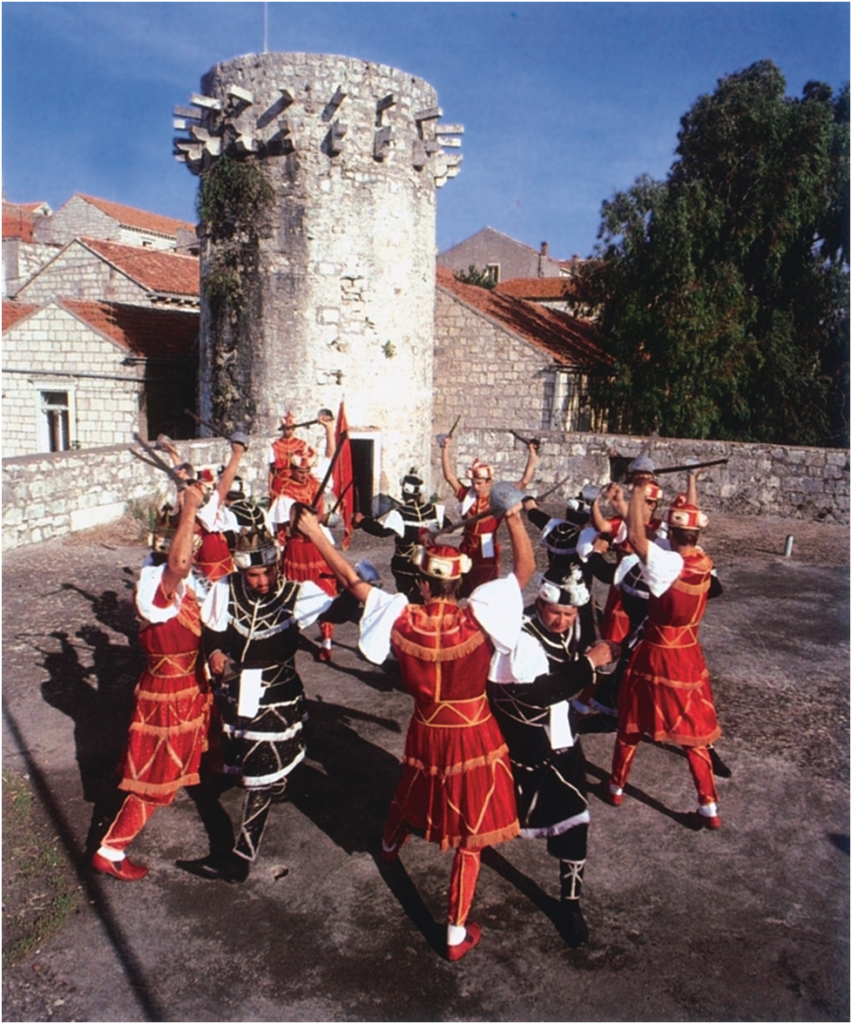
Croatian traditional culture is characterized by pronounced diversity. The environmental conditions and the influence of cultures with which Croats have come into contact throughout history (Mediterranean, Central Europe, Ancient Balkans, East, etc.) have led to the development of three specific regional cultures: Pannonian, Dinaric, and Adriatic.
The Pannonian cultural zone is characterized by cereal crops, flax, and cattle breeding. People lived in one-storey houses made of wood, clay, or brick with thatched roofs. Of the local crafts, weaving was particularly developed. Clothing was made of tightly woven cloth with richly woven or embroidered jewelry, and wide shoes (kapichari) with soft soles and boots. Women wore necklaces of coral or glass beads and, in Slavonia, gold coins.
Annual processions of young people through the village on festive days, collecting gifts, were the order of the day, as were rich wedding customs. Music and dance traditions also had great variety. In Medjimurje there was a special form of singing in unison, based on medieval melodies, and playing instruments such as the maroon zither, dulcimer, and violin, to which couples danced in pairs. The most famous dance in north-western and central Croatia was the dremeš, performed in pairs to the music of a string ensemble.

In the Dinaric cultural zone (the highlands of Croatia and the mainland of Dalmatia), sheep and goat herding was predominant. Shepherds spent summers in the mountains with large flocks of sheep and transported them to coastal areas in winter, using mobile huts. Families moved their flocks to meadows and hayfields in the alpine regions in the spring and to mountain pastures in the summer. In autumn they would harvest the meadow produce and return to the villages before winter set in. In highland Croatia, houses were mostly wooden, often with a stone basement, and the high, steep roofs were covered with wooden planks.
Domestic trades included spinning and weaving woolen cloth for upholstered furniture and clothing, making rolled shawls in water-powered mills, and pottery using a hand-turning wheel. Shepherds were particularly skilled in wood carving. Women's costumes consisted of straight-cut linen shirts with distinctive geometric embroidery on the chest and the edges of the sleeves, woolen sundresses, and long, wide-brimmed jackets known as zobun. Men wore narrow trousers and three-piece jackets over a shirt, a wide leather belt, and some woolen socks. Their feet wore light, woven shoes with soft soles. Clothes for special occasions were adorned with a large amount of silver jewelry.

In the Adriatic cultural zone, the population was engaged in fishing and the cultivation of olives, grapes, figs, and almonds, raising sheep and goats. They grew vegetables and, to a lesser extent, grains in small terraced meadows. Shipping and trade were also of great importance. Houses were built of stone, were mostly tall and narrow, and covered with cylindrical tiles or rubble stone.
At the beginning of the 20th century, 80% of Croatia's population lived in rural areas and largely continued to live according to traditional patterns. Although traditional culture began to disappear at the end of the 19th century, under the influence of modernization and urbanization, this process accelerated further in the middle of the 20th century. Many elements of traditional culture continue to exist today in changed forms and new contexts. They have acquired new meanings, while some have come to signify national, regional, or local identities.

To learn more about Croatian traditions and handicrafts, we recommend visiting Zagreb Ethnographic Museum.
Find out more about Croatia on our blog!